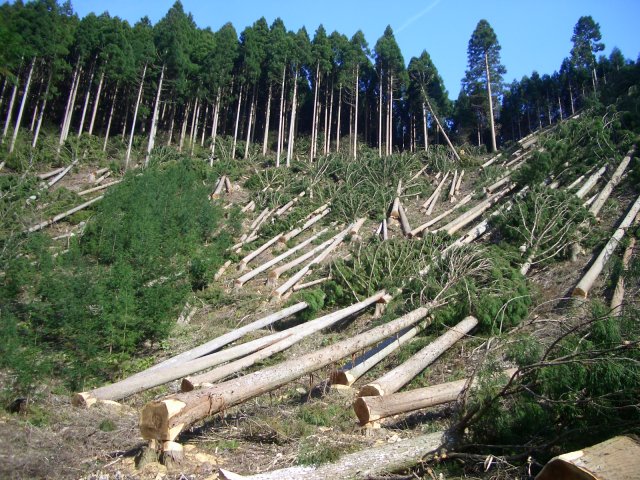Why Soil Erosion is a Problem
Soil erosion
Sometimes, wind and water remove the fertile topsoil reducing the productivity of the soil in that area. This removal of soil by running water and wind is known as soil erosion.
Generally, the rate of removal of fine particles from the surface is the same as the rate of formation of soil. But sometimes, disturbance in this balance, usually man-made, leads to a greater rate of removal of soil.
The major causes of soil erosion are:
- Deforestation: The removal of trees on a large scale is known as deforestation. When trees are removed, soil particles are left loose and can easily be carried away by running water and wind.

Deforestation - Overgrazing: Repeated grazing by animals on the same patch of land without sufficient recovery periods, leads to the removal of grass on a large scale. This makes it easy for wind and running water to erode the soil.
- Floods and heavy rainfall: Floods and heavy rainfall wash off soil, especially when there are no trees and the land is lying bare.
- Improper farming: Improper farming on hills makes it easy for wind and water to erode soil.

Terrace farming
Prevention of Soil Erosion:
Reduction or prevention of soil erosion is called soil conservation.
The following are some of the measures that help in conserving soil:
- Planting of trees in large numbers on deforested land (reforestation) or planting of trees in large numbers in an area where there was no forest previously (afforestation). Grasses and herbs can be used to cover large patches of loose soil.
- Overgrazing of a single patch by animals should be avoided. Animals should be moved to a different area after some time.
- Floods can be controlled to a large extent by building dams. Embankments or mud walls should be constructed around hill slopes or fields to stop the flow of water.
- Terrace farming should be adopted in hilly areas. In this method, suitable crops are grown on sloping ground which is cut into large steps called terraces. This reduces the speed with which water flows down, thereby reducing soil erosion.
